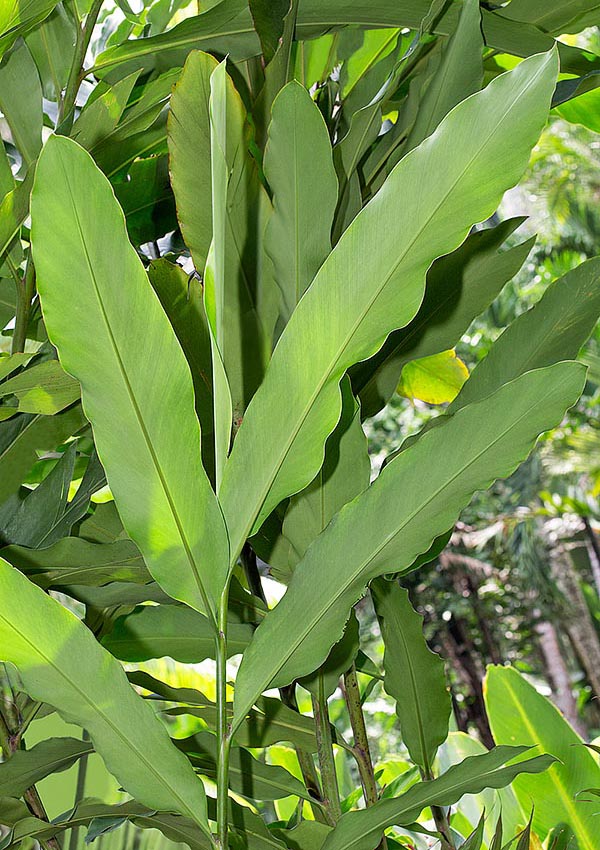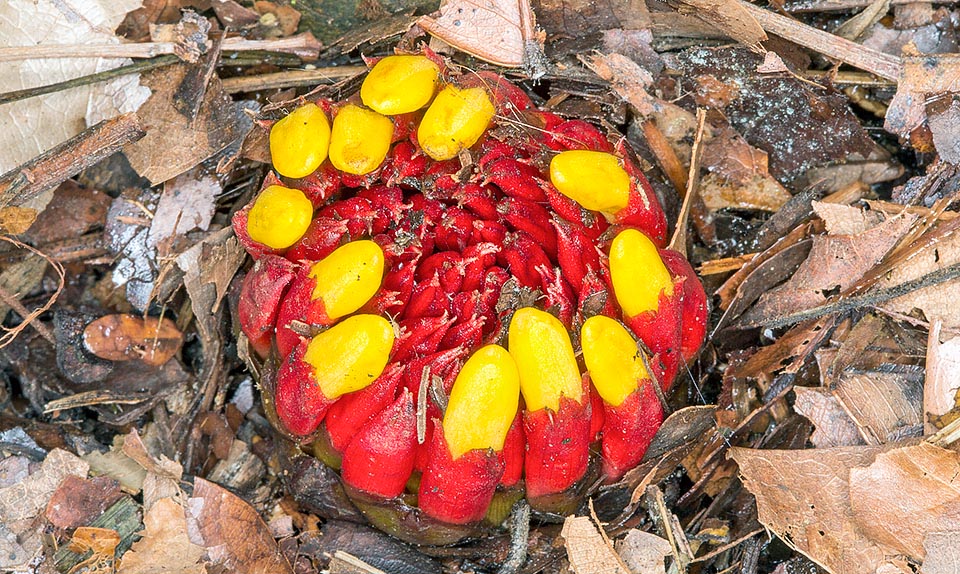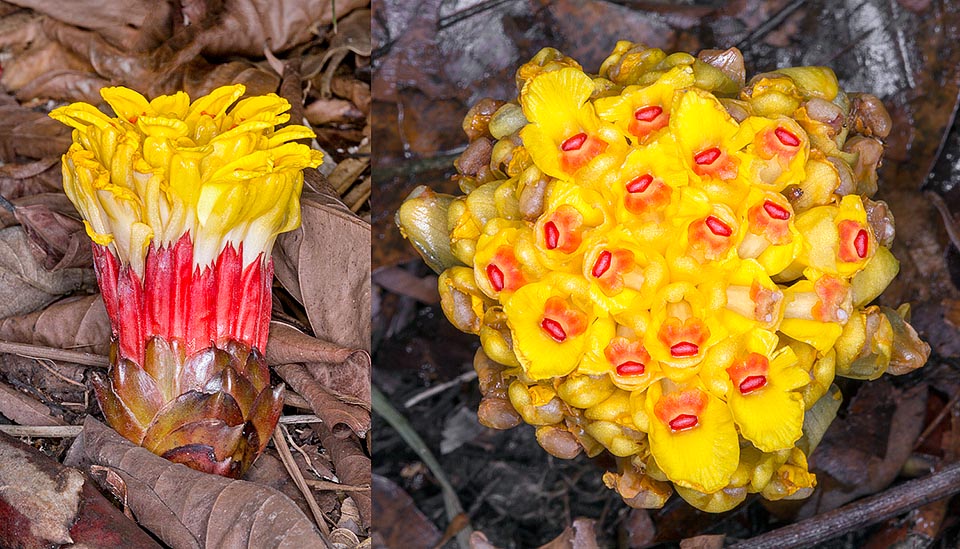Family : Zingiberaceae

Text © Pietro Puccio

English translation by Mario Beltramini

1,5-6 m tall, Etlingera fimbriobracteata is a rhizomatous perennial species of Borneo humid forests © Giuseppe Mazza
The name of the genus is honoured to the XVIII century German botanist Andreas Ernst Etlinger, author of the “Commentatio Botanico-Medica de Salvia” (1777); the specific name is the combination of the Latin adjectives “fimbriatus, a, um” = fringed and “bracteatus, a, um” = equipped with bracts, with reference to the floral bracts with fringed apex.
Common names: tolidus (Sabah), layun (Singapore).
Etlingera fimbriobracteata (K.Schum.) R.M.Sm. (1986) is a perennial rhizomatous herbaceous species, evergreeen, 1,5-6 m tall that forms tufts with pseudostems rather spaced provided of oblong leaves with entire margin and pointed apex, 120-130 cm long and 14-18 cm broad. Inflorescences on short peduncle, often hidden by the layer of vegetal debris covering the soil of the forest, directly from the rhizome close to the base of the pseudostem.
The inflorescences, about 12 cm long, are formed by sterile coriaceous bracts, imbricate, spirally arranged, that enclose a compact spike formed by bright red bracts with fringed apex, 3-3,5 cm long, that subtend up to a one hundred of intense yellow flowers that open gradually for some weeks.
Tubular calyx about 5 cm long, corolla with tube shorter than the calyx, about 4 cm, and 3 oblong lobes, obovate labellum, anthers with orange apex and red stigma. Globose fruit, about 8 cm long and 10 cm broad, fomed by a crowd of close capsules of reddish colour when ripe. It propagates by seed, but usually by division utilizing an about 20 cm long portion of rhizome with at least a pseudostem provided of leaves, shortened in order to reduce the transpiration, and some dormant buds. The rhizome is to be placed just under the surface of the loam, that must be rich of organic substance and particularly draining, to avoid stagnant water rottenness, in an ambient with temperatures of 26-30 °C and humidity around the 90%.
Species with ornamental foliage and curious bright inflorescences, poorly known out of the origin zones and rarely cultivated in gardens and botanic collections. Markedly tropical, it needs a constant warm-humid climate, an exposition in full sun or partially shaded and draining soils rich of organic substance maintained constantly humid.

The odd inflorescences have even 100 intense yellow corollas that open gradually for weeks. They pop up like mushrooms on the ground, hidden in the underwood © Giuseppe Mazza

Inflorescence from side and from above. The coriaceous, imbricate bracts are spirally arranged. They protect a compact spike with bright red floral bracts subtending long tubular flowers. Edible fruits and buds. Various parts of the plant have bioactive compounds with antimicrobial and antioxidant properties © Giuseppe Mazza
Synonyms: Amomum fimbriobracteatum K.Schum. (1899); Geanthus fimbriobracteatus (K.Schum.) B.L.Burtt & R.M.Sm. (1972).
